Welcome to our blog, where we delve into Ethiopia’s vibrant world of greenhouse farming – a testament to the country’s commitment to sustainable agriculture and a promising future. “Growing Green Futures: A Guide to Ethiopia’s Thriving Greenhouse Farming Industry” unlocks the secrets of this burgeoning sector, offering valuable insights for both beginners and seasoned farmers alike.
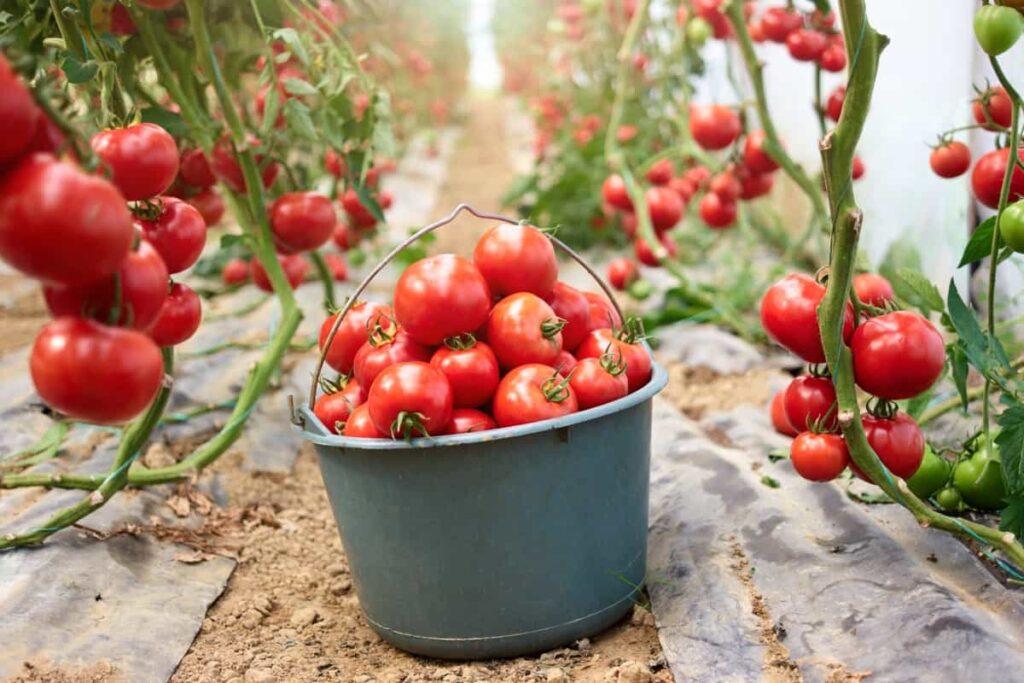
Explore the key benefits of greenhouse farming, optimal crop choices, government support, and sustainable practices suitable for Ethiopia’s unique climate. Join us as we navigate through success stories, innovative technologies, and the positive environmental impact of greenhouse farming compared to traditional methods.
What is Greenhouse Farming in Ethiopia?
Ethiopia, with 33.88% of its GDP, practices mixed agricultural activities. Challenges include land shortages, climate change, fragmentation, uneven urbanization, pests, lack of integration, and political instability. Despite these challenges, Ethiopia offers fruit, vegetable, and ornamental plant and animal production opportunities. The country has a large labor force and water resources, and its proximity to Middle East markets allows for quick transportation of fresh products.
However, due to fragmented cultivation and lack of quality, Ethiopia’s fruit, vegetable, and animal exports are limited. The country’s diverse climate and soil types enable the growth of diverse horticultural crops. Greenhouse farming in Ethiopia involves the cultivation of crops in controlled environments within structures made of glass, plastic, or other materials.
These structures allow farmers to regulate temperature, humidity, and other environmental factors, creating optimal conditions for plant growth. The method helps extend growing seasons, protect crops from adverse weather, and improve yields and quality. In recent years, Ethiopia has embraced greenhouse farming as a sustainable approach to address food security and boost agricultural productivity.
Key Benefits of Greenhouse Farming in Ethiopia
Greenhouse farming in Ethiopia offers several benefits, including increased crop yields, extended growing seasons, resource efficiency, pest and disease control, quality crop production, protection from extreme weather, diverse crop cultivation, efficient land use, reduced environmental impact, and economic empowerment.
These practices promote sustainable farming practices, protect crops from extreme weather, and enable farmers to grow various crops, enhancing food security and income generation. Greenhouses also minimize chemical use and resource wastage, contributing to Ethiopia’s more eco-friendly agricultural system. Furthermore, the increased yields and consistent crop production provide economic stability and opportunities for farmers to thrive in a competitive market.
In case you missed it: Advancing Sustainable Agriculture through Germany Greenhouse Farming

Climate-smart Agriculture for Greenhouse Farming in Ethiopia
Climate-smart agricultural (CSA) practices play a vital role in Ethiopia, sustainably increasing productivity, enhancing resilience, reducing greenhouse gas (GHG) emissions, and promoting national food security and development goals. These practices encompass various components, each contributing to specific purposes in mitigating GHG emissions and adapting to climate change. Conservation
agriculture involves reduced tillage, crop residue management, and intercropping, leading to carbon sequestration, emission reduction, and resilience to dry spells. Integrated soil fertility management focuses on composting, efficient fertilizer application, and manure management, resulting in reduced nitrous oxide and methane emissions and improved soil productivity.
Small-scale irrigation facilitates year-round cropping, efficient water use, and carbon sequestration, improving yields and enhancing food security. Agroforestry combines tree-based conservation agriculture with farmer-managed natural regeneration, enabling CO2 storage and supporting agriculture’s productivity and resilience. Crop diversification introduces new, resilient crops, ensuring food security, weather variability resilience, and improved livelihoods.
Improved livestock feed and feeding practices, reduced open grazing, and livestock breed diversification contribute to GHG and methane reduction while enhancing livestock productivity. Other CSA practices involve in situ water conservation, alternative energy adoption, livestock insurance, and post-harvest technologies, reinforcing agricultural resilience, reducing emissions, fostering improved incomes, and reducing deforestation.
Additionally, Ethiopia incorporates traditional CSA practices in different regions, like the Derashe conservation agriculture, Konso cultural landscape, traditional agroforestry, and traditional soil and water conservation. These practices, Hararghe cattle fattening, small-scale irrigation, and Ankober manure management, complement modern CSA techniques, highlighting Ethiopia’s multifaceted approach to climate-smart agriculture and sustainable development.
How to Start Your Own Greenhouse Farm in Ethiopia
- Assess market demand and find Ethiopian-climate-suitable crops. Create a detailed business plan, including goals, budget, and resources.
- Find a sunny, water-accessible area. Get local permissions and licenses.
- Greenhouse Type: Budget, crop needs, and space determine the greenhouse construction. Glass, net, or polyethylene are options.
- Tomatoes, cucumbers, bell peppers, and herbs work well in Ethiopian greenhouses.
- Buy high-quality seeds, seedlings, and planting supplies from trusted providers.
- Install the greenhouse, irrigation system, and temperature controls.
- Use Organic Fertilizers, Water Management, and Pest Control: Promote eco-friendly farming.
- Maintain crop health, water levels, and environmental conditions to maximize growth.
- Create marketing plans to promote and distribute greenhouse produce.
In case you missed it: Revolutionizing Agriculture: The Rise of Greenhouse Farming in France
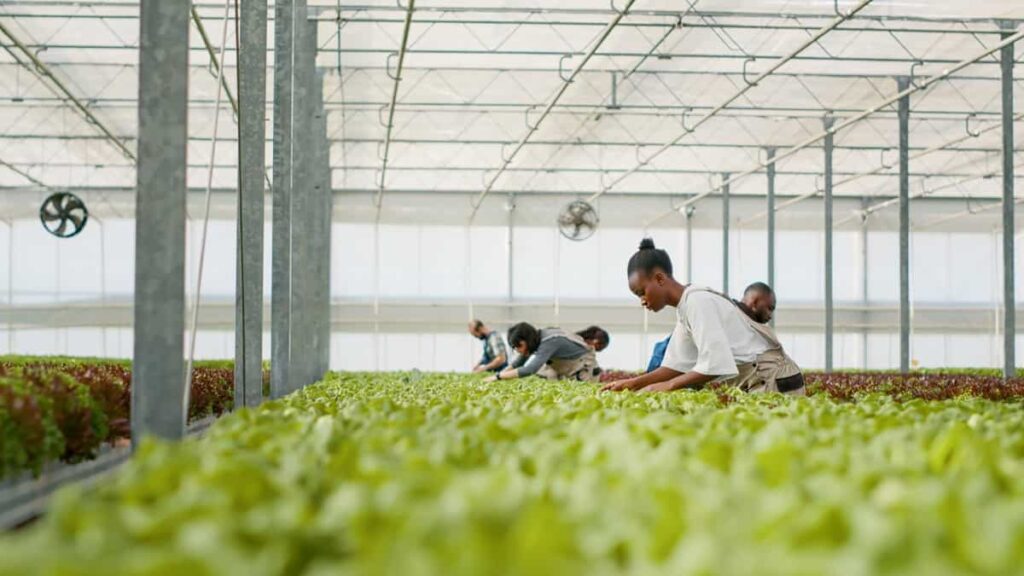
Best Crops to Grow in Ethiopian Greenhouses for Optimal Yields
Greenhouse cultivation in Ethiopia offers favorable conditions for year-round production and increased yields. Ten crops are well-suited for greenhouse cultivation: tomatoes, cucumbers, bell peppers, lettuce, strawberries, herbs, spinach, chilies, green beans, and radishes. These crops thrive in controlled environments, providing consistent yields and improved quality. Greenhouse cultivation extends the growing season, allowing earlier and longer harvests.
Basil, mint, basil, mint, spinach, chilies, green beans, and radishes are popular for year-round cultivation. Ethiopia’s crop selection is based on climate, soil conditions, market demand, and field crops. Teff, a staple crop, is known for its small grains and high nutritional value. Ethiopia is famous for its coffee production, with Arabica coffee being a prominent export crop. Maize, a widely cultivated cereal crop, contributes significantly to food security.
Wheat is vital in highland regions, while chickpea is a drought-tolerant legume suitable for Ethiopia’s semi-arid regions. Potato cultivation is expanding due to its adaptability to diverse climates and its role in food security and income generation. Barley is a significant food and feed crop grown in highland areas. Sorghum, a drought-resistant crop, thrives in Ethiopia’s arid and semi-arid regions, contributing to food security. Faba bean is a crucial pulse crop, providing a protein-rich dietary staple. Sesame seeds are essential for Ethiopia’s economy and export market.
Government Incentives and Support for Greenhouse Farmers in Ethiopia
Ethiopia’s government recognizes greenhouse farming’s significance for sustainable agriculture and food security. To support farmers, the government offers incentives like low-interest loans, tax incentives, grants for infrastructure development, and financial support for training and capacity building. Technical support, extension services, and access to improved agricultural technologies are also provided to empower smallholders to adopt modern greenhouse techniques, increase productivity, and contribute to agricultural growth and self-sufficiency.
Sustainable Practices in Greenhouse Farming for the Ethiopian Climate
Sustainable practices in greenhouse farming are essential for maintaining ecological balance and minimizing environmental impact. Ethiopian farmers are encouraged to implement water conservation, efficient irrigation methods, integrated pest management, biological controls, crop rotation, organic fertilizers, and compost.
In case you missed it: Revolutionizing Agriculture: Exploring Morroco Greenhouse Farming
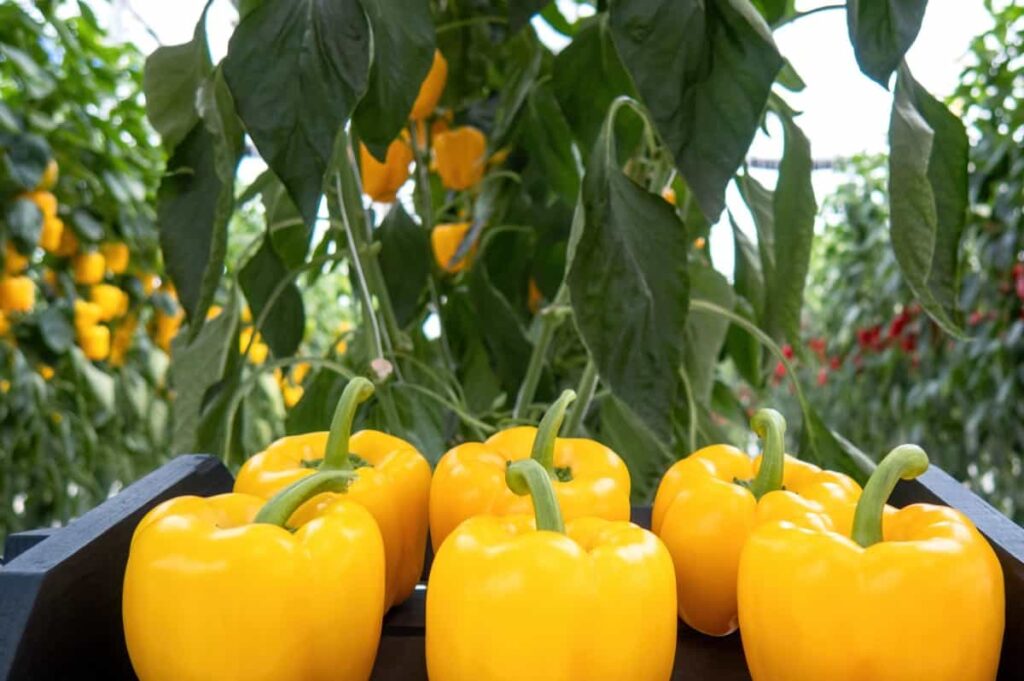
Renewable energy sources like solar power promote sustainability and reduce greenhouse gas emissions. By implementing these practices, farmers in Ethiopia can enhance resilience, protect natural resources, and contribute to a greener, more sustainable agricultural sector.
Pest and Disease Control Methods for Greenhouse Farmers in Ethiopia
Pest and disease control is essential for greenhouse farmers in Ethiopia to protect crops and ensure optimal yields. Various methods include biological control, Integrated Pest Management (IPM), crop rotation, sanitation, resistant varieties, traps and barriers, biopesticides, cultural practices, monitoring, and organic farming. These methods minimize pesticide use, break cycles, and promote biodiversity. Additionally, farmers can use natural enemies like predators, parasites, and pathogens to control pests. Regular inspections and monitoring of crops are crucial for timely action.
Tips for Successful Greenhouse Farming in Ethiopia (Especially for Beginners)
- Choose a suitable site with good sunlight exposure and protection from strong winds and extreme weather conditions. Invest in a well-designed greenhouse structure that suits the local climate and can withstand environmental challenges.
- Install proper ventilation and cooling systems to regulate temperature and humidity levels. Implement efficient irrigation systems to ensure consistent water supply. Choose suitable crops based on market demand, local climate, and farming expertise to optimize yields.
- Use quality soil and fertilization techniques to maintain soil fertility and support healthy plant growth. Implement integrated pest and disease management to control pests and diseases effectively. Regularly monitor crop growth and record-keeping to track progress and identify areas for improvement. Conduct thorough market research to understand consumer preferences and ensure successful marketing of greenhouse-grown produce.
Overcoming Common Challenges Faced by Greenhouse Farmers in Ethiopia
Ethiopian greenhouse farmers face land scarcity, land fragmentation, climate change, waterlogging, pests, and diseases. Arable farmland scarcity, particularly in highland areas, limits crop growth efficiency. Climate change also poses a threat, with erratic rainfall patterns, temperature fluctuations, and waterlogging. Greenhouse farmers can adopt sustainable practices like integrated soil fertility management, efficient water utilization, pest and disease control, crop diversification, and improved livestock feed practices to overcome these challenges.
Success Stories of Greenhouse Farmers in Ethiopia: Learning from the Best
The success stories of Ethiopian greenhouse farmers demonstrate the potential of innovative practices and modern technologies in achieving high yields and economic growth. In the Amhara region, a farmer implemented advanced climate control systems, ensuring consistent and high-quality produce.
This led to stable income and employment opportunities for the local community. In the Oromia region, a female farmer embraced vertical farming techniques, maximizing crop production and managing limited land resources. In the Tigray region, a cooperative of greenhouse farmers shared knowledge, resources, and best practices, increasing their market share and bargaining power with buyers, resulting in better prices for their produce.
Latest Innovations and Technologies in Ethiopian Greenhouse Farming
Vertical farming, hydroponics, and AI-based crop monitoring are all methods that maximize land efficiency and year-round production. Vertical farming uses stacked layers for stacked crops, while hydroponics uses nutrient-rich water solutions without soil for faster growth and higher yields. Automated climate control and drip irrigation optimize growing conditions.
In case you missed it: From Seed to Supermarket: Mexico Greenhouse Farming
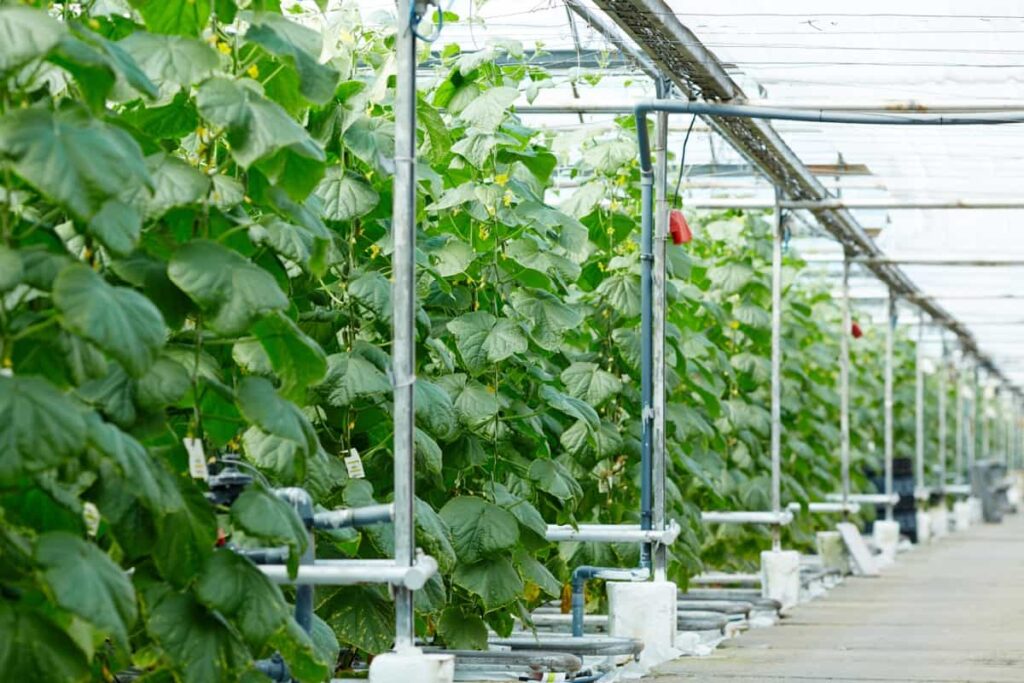
AI-based crop monitoring monitors plant health, detects diseases and optimizes nutrient delivery. Solar-powered greenhouses use solar energy, while integrated pest management reduces harmful chemicals. IoT applications monitor greenhouse conditions remotely, and aquaponics combines aquaculture with hydroponics for a symbiotic system benefiting plants and fish. Biodegradable packaging reduces plastic waste in greenhouse-grown produce.
Positive Environmental Impact of Greenhouse Farming Compared to Traditional Methods
Greenhouse farming offers numerous environmental benefits compared to traditional methods, including water efficiency, reduced land footprint, reduced pesticide use, less soil erosion, energy efficiency, year-round production, lower food miles, and biodiversity conservation. Controlled irrigation systems, vertical farming, and renewable energy sources contribute to these benefits. Greenhouses also minimize soil erosion, reduce greenhouse gas emissions, and promote biodiversity conservation by reducing the need for harmful chemical interventions.
Market Opportunities and Demand for Greenhouse-Grown Produce in Ethiopia
The country’s increasing population and urbanization drive the demand for fresh, high-quality vegetables and fruits. Urban consumers are willing to pay a premium for locally grown, pesticide-free produce. Additionally, Ethiopia’s export potential for greenhouse crops is growing as international markets seek year-round supplies of vegetables and flowers.
Greenhouse farmers can meet this rising demand by adopting sustainable and climate-smart agricultural practices. Moreover, the government’s focus on agricultural development and investment incentives further supports the growth of the greenhouse farming industry in Ethiopia.
Collaborations and Partnerships between Greenhouse Farmers and Research Institutions in Ethiopia
These collaborations involve knowledge sharing, research initiatives, and technology adoption. Research institutions offer valuable insights and expertise to farmers, helping them optimize crop yields, pest control, and resource management. In return, farmers provide real-world data and feedback to improve research outcomes. These partnerships foster innovation, leading to sustainable practices tailored to the Ethiopian climate.
Economic Implications of Greenhouse Farming in Ethiopia
Ethiopia faces significant challenges in food security due to population growth, urban development, climate change, natural resource depletion, inflation, youth unemployment, political turmoil, and civil conflicts. A collective effort from the government, non-governmental organizations, and international institutions is needed to address these issues.
In case you missed it: Sustainable Greenhouse Farming: The Future of Agriculture
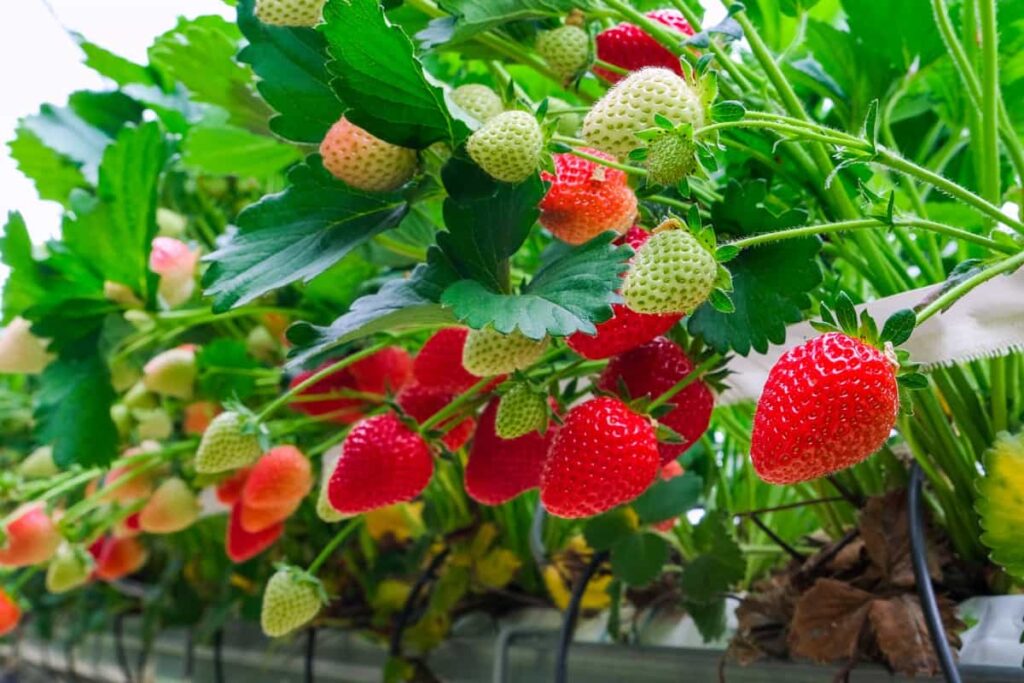
The agriculture sector in Ethiopia relies heavily on rain-fed farming, making it susceptible to weather variability, droughts, and pests. Land scarcity and fragmentation of arable farmland, particularly in highland areas, further exacerbate poverty and food insecurity.
Conclusion
Ethiopia’s thriving greenhouse farming industry offers promising opportunities for sustainable agricultural practices. With increasing demand, favorable government support, and export potential, greenhouse farming is key to a greener and more secure future for Ethiopian agriculture.
- Broccoli Varieties: Choosing the Right Cultivars for Your Farm
- How to Raise Pigs in Your Own Backyard: A Comprehensive Guide
- Budget Friendly Sheep Shed Ideas: Cheap and Low-Cost Tips
- How Much Do Cattle Farmers Make: Revenue Streams in Cattle Farming
- Management Pests and Diseases in Your Cotton Field
- Sheep Farming Business Plan for Beginners
- Aquaponic Farming at Home: A Step-By-Step Guide
- Profitable Village Farming Business Ideas in 2024
- High-Yield Aquaculture: Fast-Growing Fish for Farming
- Effective Fish Pond Construction Techniques for Beginners
- Irrigation and Water Management in Pineapple Farming
- Blossom to Harvest: Mastering Flowering and Pollination in Papaya Farming
- Pig Fattening Essentials: From Selection to Sale for Beginners
- Raising Wagyu Cattle: A Complete Guide for Premium Beef Production
- Soil Types and Their Water Holding Capacity
- Optimizing Irrigation Schedules for Coconut Groves for Enhanced Yield
- Espresso Your Garden: Coffee Grounds for Healthier Acid-Loving Plants
- The Best Soil Mix for Snake Plants: How to Mix Your Own Snake Plant Soil
- Green Thumb Success: Expert Tips for Cultivating Greenhouse Beans All Year Round
- Bloom All Year Round: The Ultimate Guide to Indoor Hyacinth Care
- Eco-Friendly Gardening: How to Make Liquid Fertilizer from Kitchen Waste
- Ultimate Guide to Grow Anise in Pots: Explore Seed Propagation to Harvesting
- Guide to Raising Chester White Pigs: Discover Breed Facts to Growth Management
- Mastering the Elegance: The Ultimate Guide to Weeping Cherry Tree Care, Planting, and Maintenance
- Ultimate Guide to Planting Garlic in Grow Bags: Growing Strategies for Beginners
- How to Fix Spider Plant Leaf-Related Problems: Natural and Organic Remedies
- 10 Reasons Why Your Tulsi Plant is Shedding Leaves: Home Remedies and Solutions
- Optimizing Growth and Yield: The Advantages of Palm Bunch Ash Fertilizer
- Utilizing Neem Oil Extract as a Natural Pesticide for Hydrangea
- From Soil to Harvest: Various Ways in Which Farmers Can Use AI Tools
- Steps to Encourage and Induce Citrus Flowers: A Comprehensive Guide
- How to Fix Snake Plant Leaf-Related Issues: Natural and Organic Remedies
- Transform Your Garden into a Fragrant Oasis with Raat Ki Rani (Night Blooming Jasmine)
- Discover the Ideal Chicken Breeds for Philippine Farms
- How to Create a Poultry Egg Farm Business Plan for Profits
- Grow Lemon Cucumbers Like a Pro: Insider Techniques for Bountiful Yields
